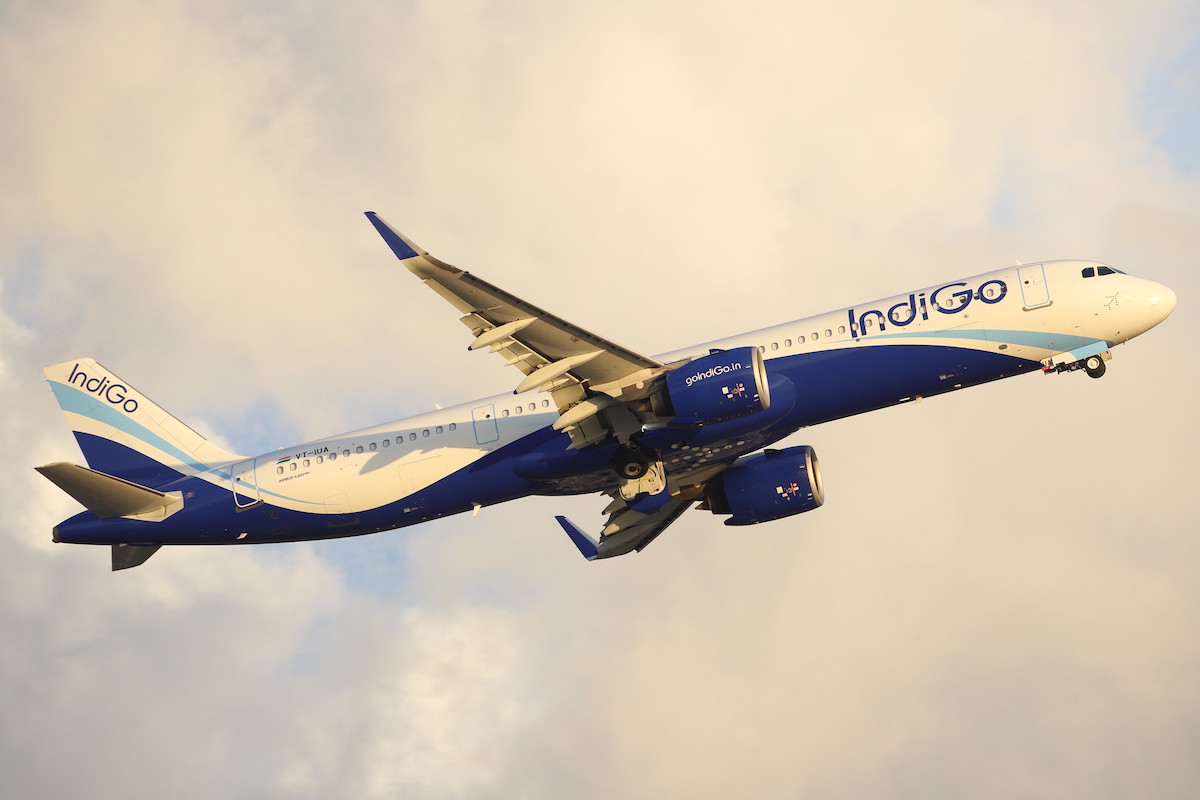IndiGo CEO Fears Demand Will Fall as Fares Rise to Match Fuel Costs

Photo Credit: IndiGo is adding capacity by replacing smaller A320s with larger A321neos. Flickr / EddieWongF14
IndiGo is navigating between dual headwinds, unfavorable foreign exchange and sharply rising fuel costs, and is reaching a limit of how much of these higher costs it can pass on to passengers. But despite these negative forces, the Indian carrier is optimistic about the trajectory of the country's aviation market in the medium- to long-term.
Fuel costs rose precipitously in the quarter that ended in March. In that month alone, fuel rose 15 percent from February. The pain continued even after the quarter's end. April's fuel tab was 11 percent higher than March's, and May's is 6 percent higher than April's. India imports almost all of its energy and its economy took a hit after Russia's invasion of Ukraine forced global oil prices higher.
Unfavorable foreign exchange added 6 billion rupees ($77 million) to IndiGo's quarterly losses, CEO Ronojoy Dutta told investors on May 25. The rupee reached an all-time low against the dollar earlier this month. The dollar has gained in strength since the beginning of the year, and India is beset with rising energy costs and domestic inflation. "It's a tug of war," Dutta said of foreign exchange and fuel cost pressures.
Dutta noted that inflation is eating into demand, as passengers put off trips due to higher costs of essential goods. Internally, the carrier is dealing with employee demands for higher pay to combat rising prices, he said. Pilots are set to get an 8 percent pay raise, and are expected to get an additional 6.5 percent pay raise later this year.
"It's a balancing act," Dutta said. The carrier has been raising fares, but it is leery of raising fares beyond what the market can bear and squashing demand. But IndiGo is focused on profits, Dutta said, so fares have risen. Some demand has fallen off, but yields are holding steady as more corporate travelers return to flights.
And corporate travelers have returned. In March, corporate travel was at about 64 percent of pre-pandemic levels, but by April and continuing so far into May, corporate traffic has exceeded pre-pandemic levels, Dutta said.
Leisure traffic is holding strong. Dutta credited IndiGo's network for its success. Compared with its competitors, IndiGo offers more schedule depth and connections, allowing it to recover faster from irregular operations. This gives travelers more confidence, he said. And while its competitors focus on traffic between India's major metropolitan centers — New Delhi, Bombay, Calcutta, Chennai, and Bangalore — IndiGo has built on its strength in these markets as well as opening new stations beyond the metropolitan centers.
India's economy is recovering from a downturn during the pandemic. And long-term growth prospects remain strong. This is resulting in a "structural shift" away from rail travel to air travel that is only at its beginning phase, Dutta said. "People travel more, and people who could afford it are spending more on travel, vacations, and to go visit," he said. "And people before who couldn't afford it now can afford it, and because income levels have gone up."
Dutta dismissed growing competition, from the newly privatized Air India, revived Jet Airways, and start up Akasa. His concern is that the latter two, in particular, could behave "irrationally" and drive fares down, forcing IndiGo to match. But he noted that IndiGo gets a larger percentage of higher-yielding fares booked 15 days before travel than its competitors.
Speaking of the booking curve, IndiGo said the curve is lengthening out and is now approaching pre-pandemic norms for travel.
The carrier is looking beyond India for future growth. International travel is more profitable and offers higher yields, but the challenge is that India is "surrounded by hubs," Dutta said, referring to mega-hubs in Dubai, Doha, Singapore, and elsewhere in the region. Its fares to Dubai, for example, are higher than Emirates', but Dutta said the pricing makes sense, given that Emirates prices its fares from India with an eye to connecting beyond Dubai, while IndiGo travelers tend to end or begin their journeys in that city. Point-to-point service will be the focus of IndiGo's international expansion, he added.
The carrier plans to fly 13-17 percent more capacity for the balance of this year than it did before the pandemic. Capacity will be 2.5 times more than last year, during the worst of the pandemic. Its fleet size will remain roughly flat at 275 aircraft, but the increased capacity will come from upgauging with Airbus A321neos, Dutta said. The carrier plans to beef up its cargo operation with four Airbus A321ceo conversions.
IndiGo reported March quarter revenues of 82 billion rupees, 29 percent higher than the previous year. Losses came to 16.8 billion rupees, or 10.8 billion rupees without losses due to foreign exchange. Unit costs excluding fuel were up more than 12 percent due to unfavorable foreign exchange.
